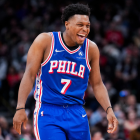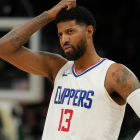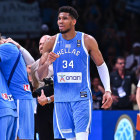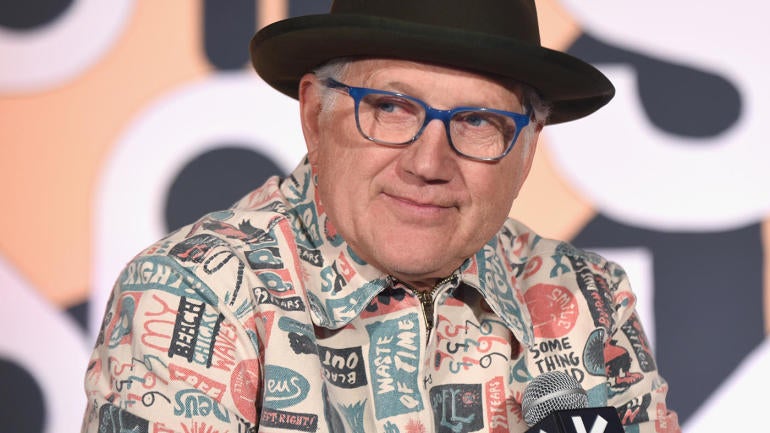
Tinker Hatfield, longtime Nike designer and one of the most influential figures in the sneaker scene over the last 40 years, has found a new way to bring his creativity to the basketball world but this isn't a story about a sneaker design. Hatfield's creativity is on display once again but this time he's making sure whichever team wins the NBA Finals gets to celebrate in style with the exclusive NBA Championship Bottle. Hatfield teamed up with Michelob Ultra to develop the unique Championship Bottle, inspired by a combination of the Larry O'Brien NBA Championship Trophy and the classic look of a traditional basketball net.
In an exclusive interview with CBS Sports, Hatfield takes a deep dive into his motivation as a designer, the impact the Jordan 3 had on Michael Jordan as he seriously considered leaving Nike, chooses one of his sneakers to wear for the rest of his days and much more.
CBS Sports: Tell me about your latest project with Michelob Ultra and what it was like to design something that wasn't a sneaker?
Tinker Hatfield: I do various projects but I'm pretty picky about what I do outside of Nike. There are a lot of requests and I usually boil it down to: Is it going to be interesting? And does the company represent class and doing all the right things? I think Michelob has a really great communications program and their product is fantastic. It was kind of an easy call that this would be a fun project. It's tied back to the NBA, a world that I know so that's kind of how it got rolling.

CBS: Over the years, what has kept you motivated in the design world?
TH: That's a great question and I'm sure there's some people that would just as soon have me step out of the way (laughs). But the reality is every season, every year, every day there are new sources of inspiration. Whether it be new players, new sports or, in my case, meeting people in the media it's just really fun to interact. My life is pretty rich with relationships and design is a great way to connect with people, and I love that part of it.
CBS: If you think back to the early stages of the Jordan Brand, and once you got involved with the Jordan 3, did you ever think what you were doing would revolutionize the sneaker industry and end up where it is today?
TH: No, I don't think so. I got the project really, really late in the normal process. I jumped on a plane, I really didn't have time to think about any of that stuff, I needed to meet with Michael [Jordan] and develop a relationship. And in the case of that time period, really convince him to stay at Nike. We all felt that if the design was fantastic he would be more apt to re-sign with us. So the context was pretty interesting, so I was thinking about all those things while taking a new approach to athletic footwear altogether, which included what I would call some more fashion/unique influences from outside the sport.
CBS: You just spoke to the fact that Michael Jordan was close to leaving Nike, so did you feel pressure in that moment, in that design process to keep M.J. at Nike?
TH: I didn't feel it as much as others because I knew I had a job to do. That job was to get to know Michael and do the best I could under a short time. I could feel a little bit of it but I grew up as an athlete and competed at pretty high levels, so you learn to deal with pressure and sometimes that pressure can actually bring out the best in a person. It was crazy short timelines and yet I was trying to make a huge statement in design using Michael as the muse and also hoping to help him play the game better. He had broken his foot the year before and I think he was a little tentative about how shoes would come together to help him be safe, healthy and perform better. So I was more focused on that than really this other anxiety that some people were feeling about him leaving. I was just trying to do a good job and I figured he might stay if I did. The rest is a little bit of history.
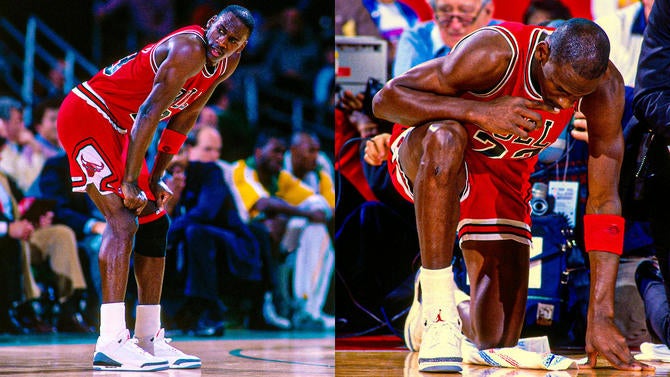
CBS: You've said in previous interviews that part of your job was to "solve problems" while designing sneakers. Was there ever a problem you couldn't solve?
TH: Our process, at Nike and Jordan [Brand], is to serve athletes, help them perform better and to be safer so they can avoid injury as much as possible. Those things are kind of No. 1 on the list of what we need to do. Players will want lighter weight shoes but they still want to be safe and protected. So there's a lot of alchemy going on when doing that. That's true with all of our athletes, whether they're the world's biggest stars or just weekend athletes. I think maybe what I brought to the party a long time ago was that even within that context we could have fun and create some unique stories and narratives around the design of the shoe based on the athlete we were working with. That wasn't really being done before I started in the shoe business.
CBS: The NBA has come a long way from a strict sneaker policy to where it is today, what are your thoughts on the NBA sneaker scene currently?
TH: I think it's so interwoven now, which I find very interesting. A lot of people watch the game but they're very aware of what sneakers a particular athlete is wearing. If you look around the court, I know all kinds of people who look and see what the fans are wearing, especially the feet-on-the-floor fans. Spike Lee, Jay Z or Beyonce, anybody of note and I think that's really different. I don't think that was going on years ago. Now it's woven into the game, it's woven into our modern culture to the point where sports and entertainment are more closely linked than ever. It's very fun and interesting that entertainers would love to be an athlete and athletes really look up to entertainers. Really what's happening is that it's kind of blending and that's very exciting.
CBS: If you could only wear one shoe for the rest of your days, what would it be?
TH: Whoa, that's a tough question. It depends on what I'm doing but if I had to pick just one it has to be something that's pretty versatile. There's a shoe that I designed a long time ago that I actually bring out every once in a while and wear it and it's called the Nike Air Trainer 1. That shoe was designed to work reasonably well for just about anything. So I'd choose a shoe like that. There's some shoes that might be cooler, but in the end if I had to choose one I'd go to the Swiss Army Knife of all shoes.











